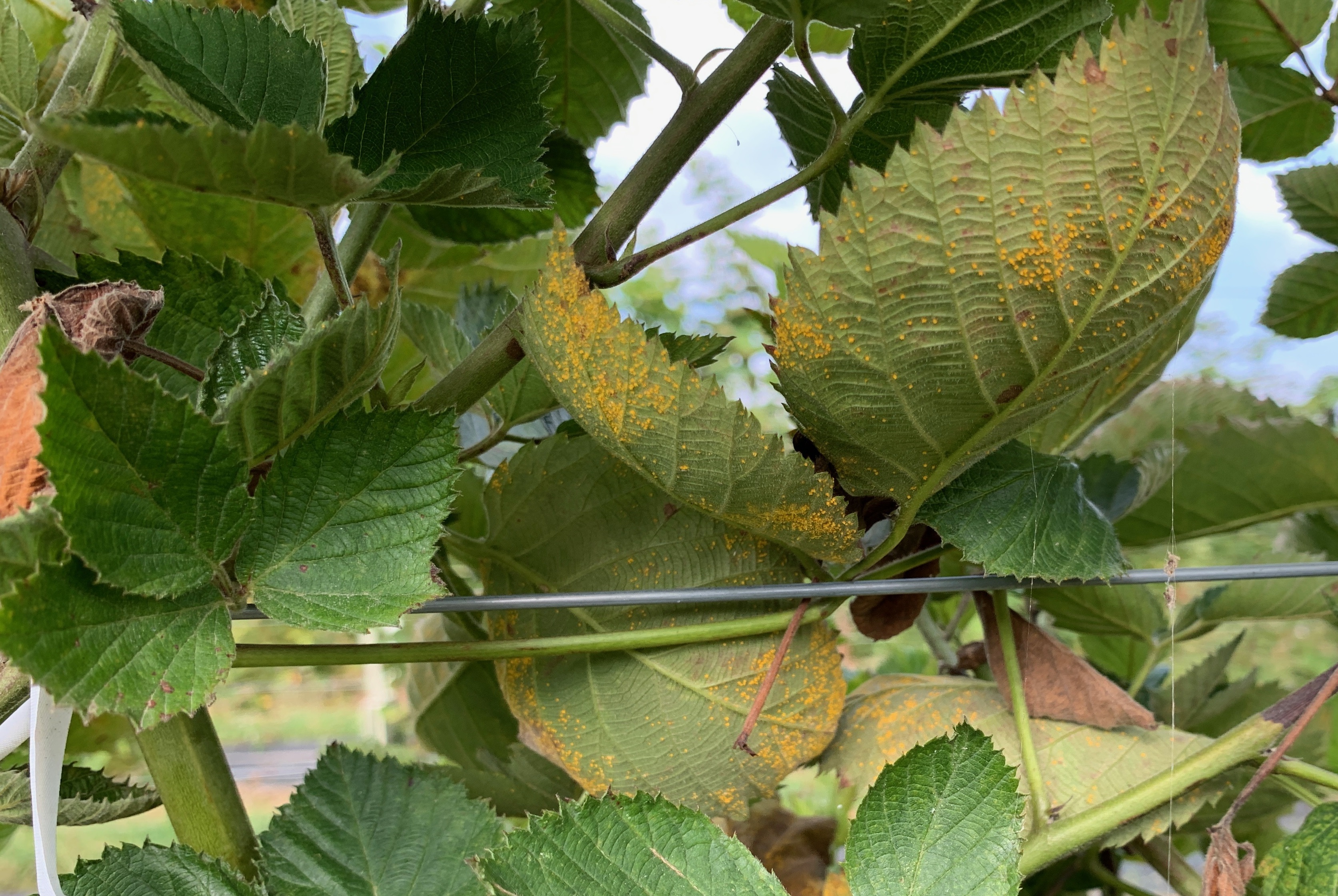
Leaf and Cane Rust in Post-harvest Blackberry
Is an orange powdery-like substance showing-up on your blackberry? Here are some guidelines for diagnosing and treating leaf and cane rust in post-harvest blackberry.
Many blackberry growers in the state have finished up harvest and moved on to maintenance of their crop and prepping it for the next year. Although many of our varieties no longer have fruit present, we still have to watch out for a few diseases that can impact the plant. One late season disease that we are seeing pop-up across the state is leaf and cane rust, which is caused by the fungus Kuehneola uredinis. This disease is often confused with orange rust, which has no means of control except removing the plant. Leaf and cane rust, pictured below, can be controlled by many fungicides, and is something we should be scouting for and responding to as it can lead to severe defoliation and potentially impact next year’s yield.
If you observe orange pustules that look like leaf or cane rust in your blackberry, call your county agent to get samples sent in to the plant health clinic for a confirmation of the diagnosis. In the summer-early fall it is much more likely to be leaf and cane rust, but it is still important to confirm the issue at hand before determining a remedy. When leaf or cane rust is confirmed post-harvest, make sure to prune out all floricanes that are present and burn these canes outside of the blackberry field. After floricanes are removed, if rust is observed on primocanes apply Abound (FRAC 11) or Cabrio (FRAC 11) or Quilt Xcel (FRAC 11 +3) or Rally (FRAC 3) or Tilt (FRAC 3) or Pristine (FRAC 11 + 7).
Consult the following guides for more specific recommendations:
- Arkansas Small Fruit Management Schedule
- 2019 Southeast Regional Caneberries Integrated Management Guide
